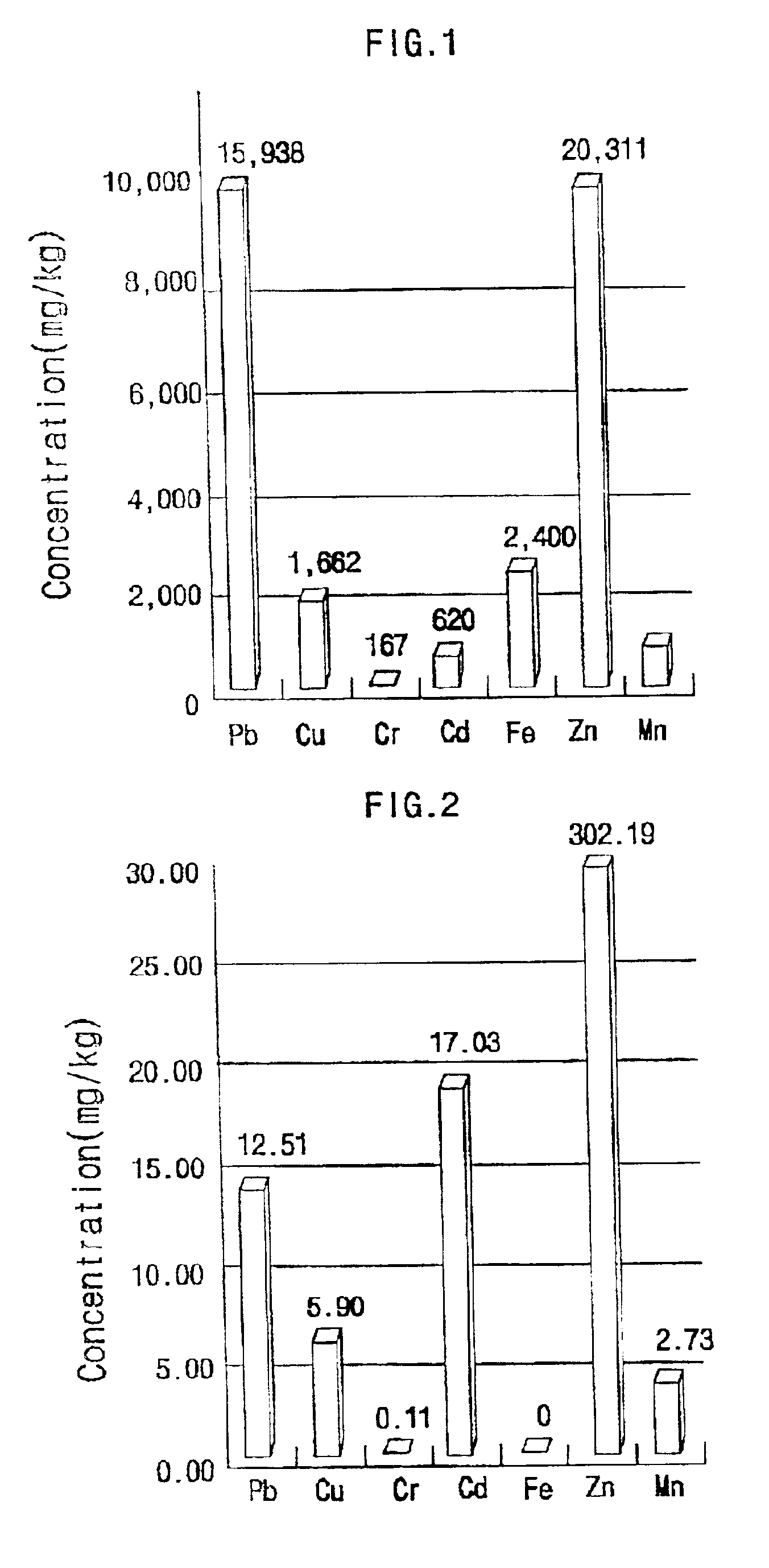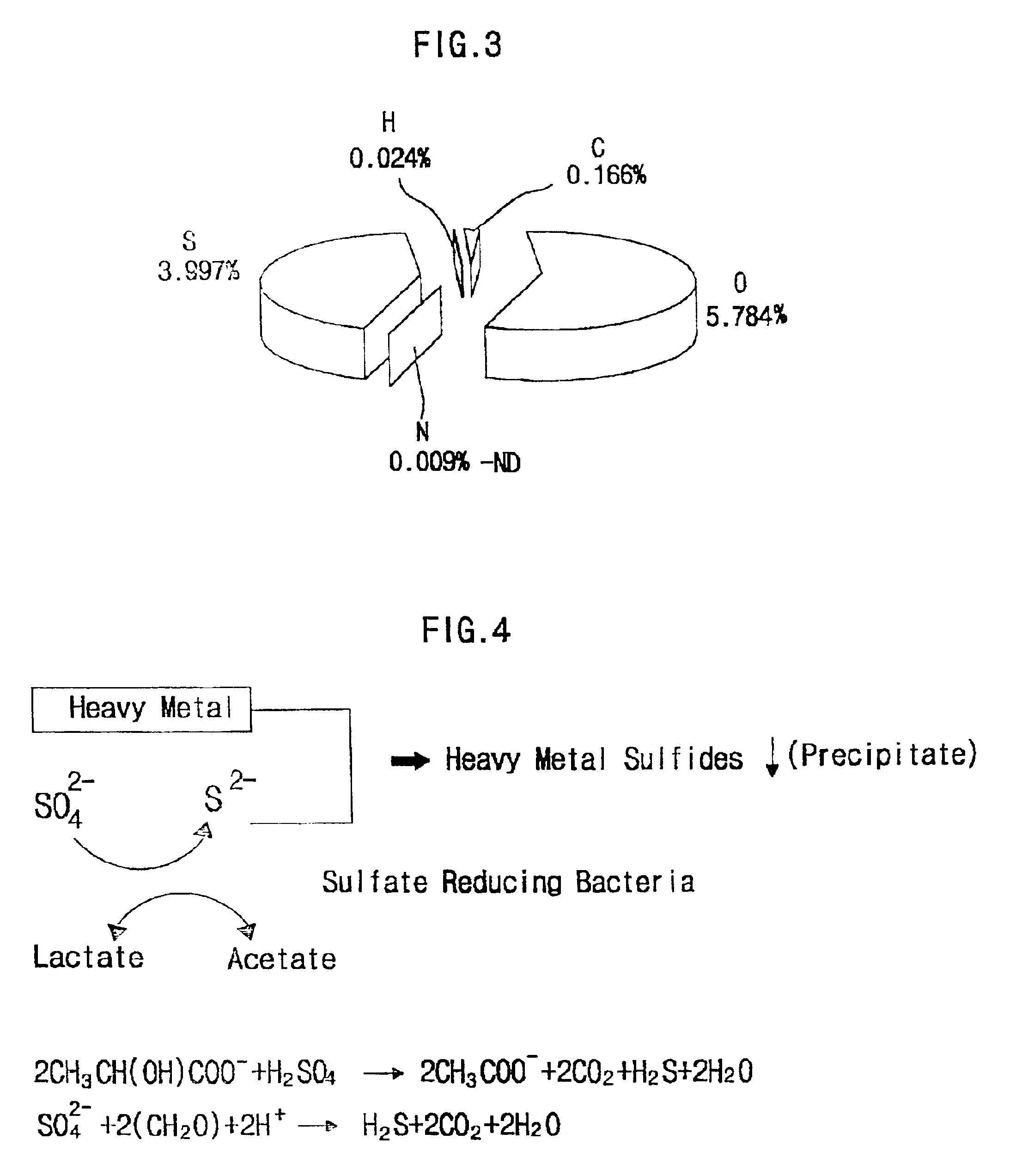Method of treating incineration ashes with sulfate reducing bacteria
- Summary
- Abstract
- Description
- Claims
- Application Information
AI Technical Summary
Benefits of technology
Problems solved by technology
Method used
Image
Examples
example 2
provides a method for treatment of leachate from the landfills in which the incineration ash, the city trash and the sewage sludge have been separately filled up, by treating them with the anaerobic condition.
Referring to FIG. 8a, the leachate (81) from the region of the incineration ash and the leachate (82) from the region of the sewage sludge in the landfill are collected in one reaction plant (85). To this, the leachate (83) from the region of the city trash may also be added for using the sulfate-reducing bacteria from the region of the city trash.
The reference number 86, which was not explained, indicates the mixture of each leachate from the incineration ash, the sewage sludge and the city trash.
Referring to FIG. 8b, in the mixture (86) in the reaction plant (85), the heavy metals existing in the leachate from the incineration ash may be precipitated by the action of sulfate-reducing bacteria in the sewage sludge. The mechanism of such reaction was aforementioned
Referring to ...
PUM
 Login to View More
Login to View More Abstract
Description
Claims
Application Information
 Login to View More
Login to View More - R&D
- Intellectual Property
- Life Sciences
- Materials
- Tech Scout
- Unparalleled Data Quality
- Higher Quality Content
- 60% Fewer Hallucinations
Browse by: Latest US Patents, China's latest patents, Technical Efficacy Thesaurus, Application Domain, Technology Topic, Popular Technical Reports.
© 2025 PatSnap. All rights reserved.Legal|Privacy policy|Modern Slavery Act Transparency Statement|Sitemap|About US| Contact US: help@patsnap.com



